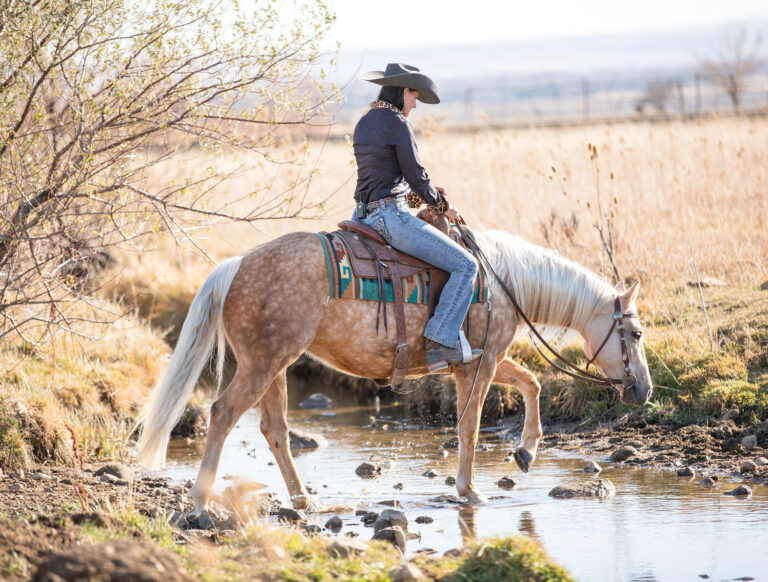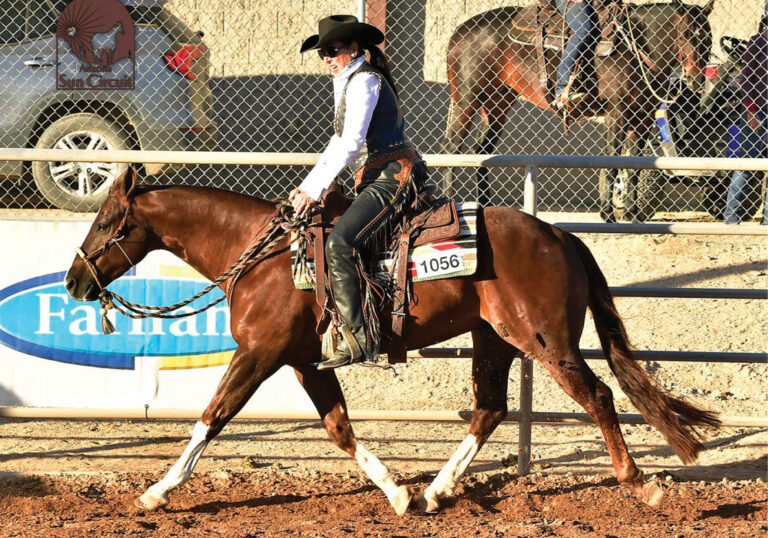
If your horse suffers from separation anxiety, it means he becomes obsessive whenever he’s apart from his friends. Whether he’s taken away from them or left behind when they leave, he can’t stop focusing on them and wanting to be with them.
I now deal with the issue of separation anxiety differently from how I have in the past. Now my goal is simply to help the horse change his focus and center himself. He learns to do this on his own—to stop obsessing and to bring his thinking back into the present, and in that way calm down and go back to just being a horse.
I’ve been high on this exercise for a while now and have used it with many different kinds of horses. I’ve come to think of it as my starting point. Done correctly over time, it gives you a relaxed horse that’s connected to you in a natural, non-obsessive way. And all is accomplished without having to “train on” the horse—he winds up volunteering all this relaxation and connectedness.
[RELATED: Warwick Schiller desensitizes a horse to a tarp.]
How This Approach Works
What I recommend is similar to what you might do with a human who’s suffering anxiety or depression. That person’s distress is caused by his single-minded focus on what worries or depresses him.
You might say his mind (what he’s thinking about) and his body (his actual physical reality) are in two different places. You can encourage that person to get his mind and body back together through mindfulness meditation, which opens a way for him stay in the present rather than getting lost in his obsessive thinking.
What I do with a horse is similar to that. By repeatedly capturing his attention and drawing it away from what he’s focused on, I want to help him discover he can come back to himself and stop all that unpleasant obsessiveness on his own.
That’s why I don’t try to change his focus from the other horses to me, specifically. I don’t want him to have to rely on another horse or a human to obtain relief. Ultimately, I want him to realize he can do it on his own.
Consider reading The Nature of Horses: Exploring Equine Evolution, Intelligence, and Behavior or The Horse Behavior Problem Solver, both available on Amazon.
Products we feature have been selected by our editorial staff. If you make a purchase using the links included, we may earn a commission. For more information click here.
How to Change Your Horse’s Focus
I like to work in a large, safely enclosed area. You’ll also need a stick with a flag at the end to attract your horse’s attention.
Turn your horse loose in the enclosure after you’ve arranged to have his horse buddies someplace far enough away where he can just glimpse or hear them.
Your horse will stand facing the direction of his buddies, probably neighing to them anxiously. Or he may walk the fence line back and forth, displaying body language that clearly says, “I don’t want to be here. I want to be there!”
Your goal is to use the flag to capture your horse’s attention for a moment, even if all you get at first is a brief flick of his ear. Start a distance away, with minimal movement of the flag, then come closer and increase the flag’s activity as need be until you get at least an ear flick.
The instant you do, stop everything and stand quietly. This tells your horse you’ve noticed his change in focus and are honoring it.
If you have trouble getting your horse’s attention in the beginning, you may have to become quite inventive. Do what it takes, but then let him know (by stopping) the moment you see his focus change. His realization that you’re aware of him to that extent will begin to bring about a huge difference in his whole self-confidence and demeanor.
Let’s look at how it works in practice.
1. Anxiously Separated
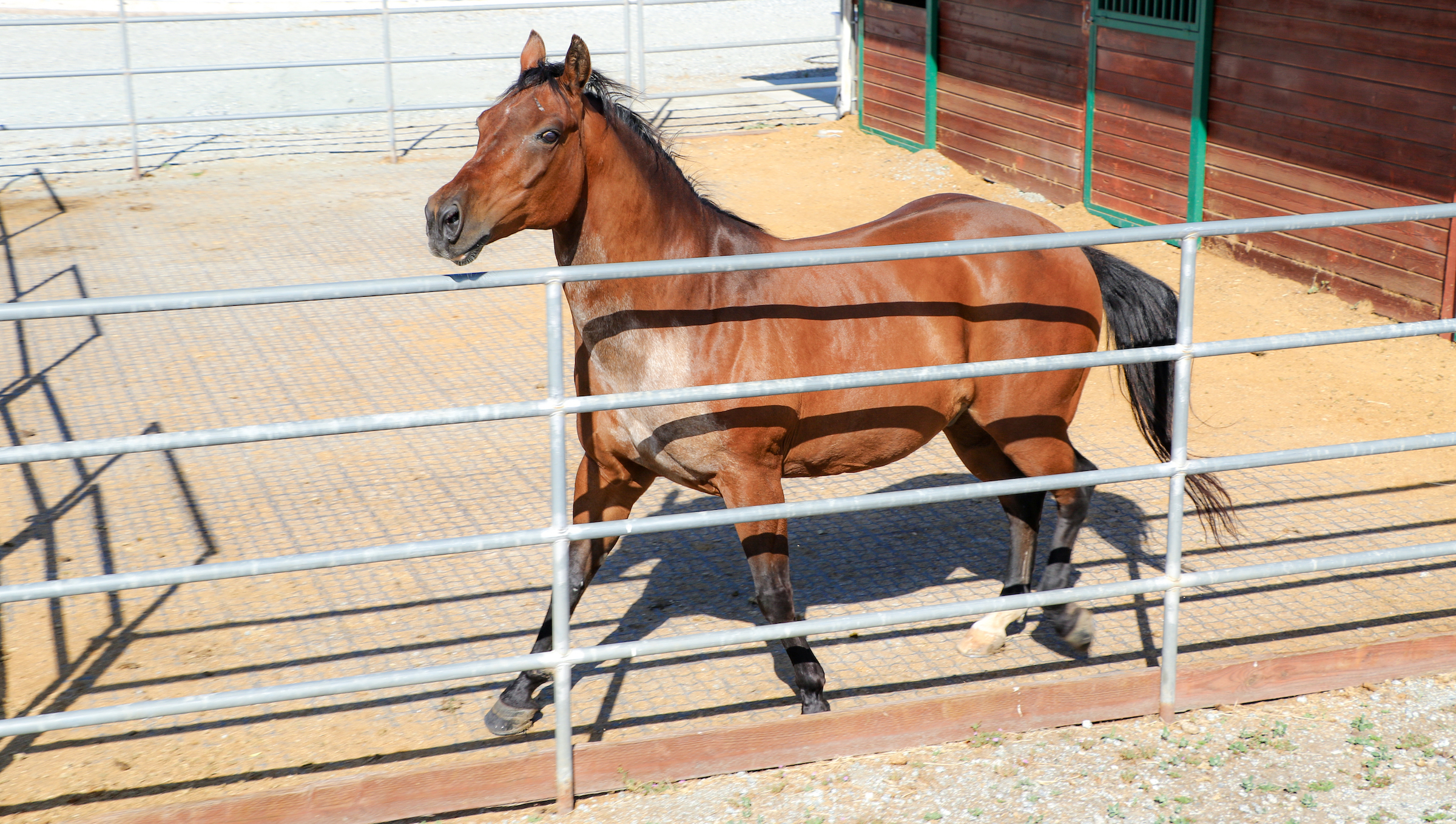
My gelding is showing all the signs of separation anxiety. He’s upset at being confined away from his buddies. His body is tense, his head raised, his attention directed away from himself and his immediate environment.
2. Stuck *Here*, But Focused *There*

Planting himself as close to his buddies as he can get, my gelding continues his single-minded focus on them. His starched-forward ears indicate where his mind is. I’m sitting quietly in the background, not yet doing anything. But I’m about to ask him to take his focus off of his buddies.
3. His Focus Changes
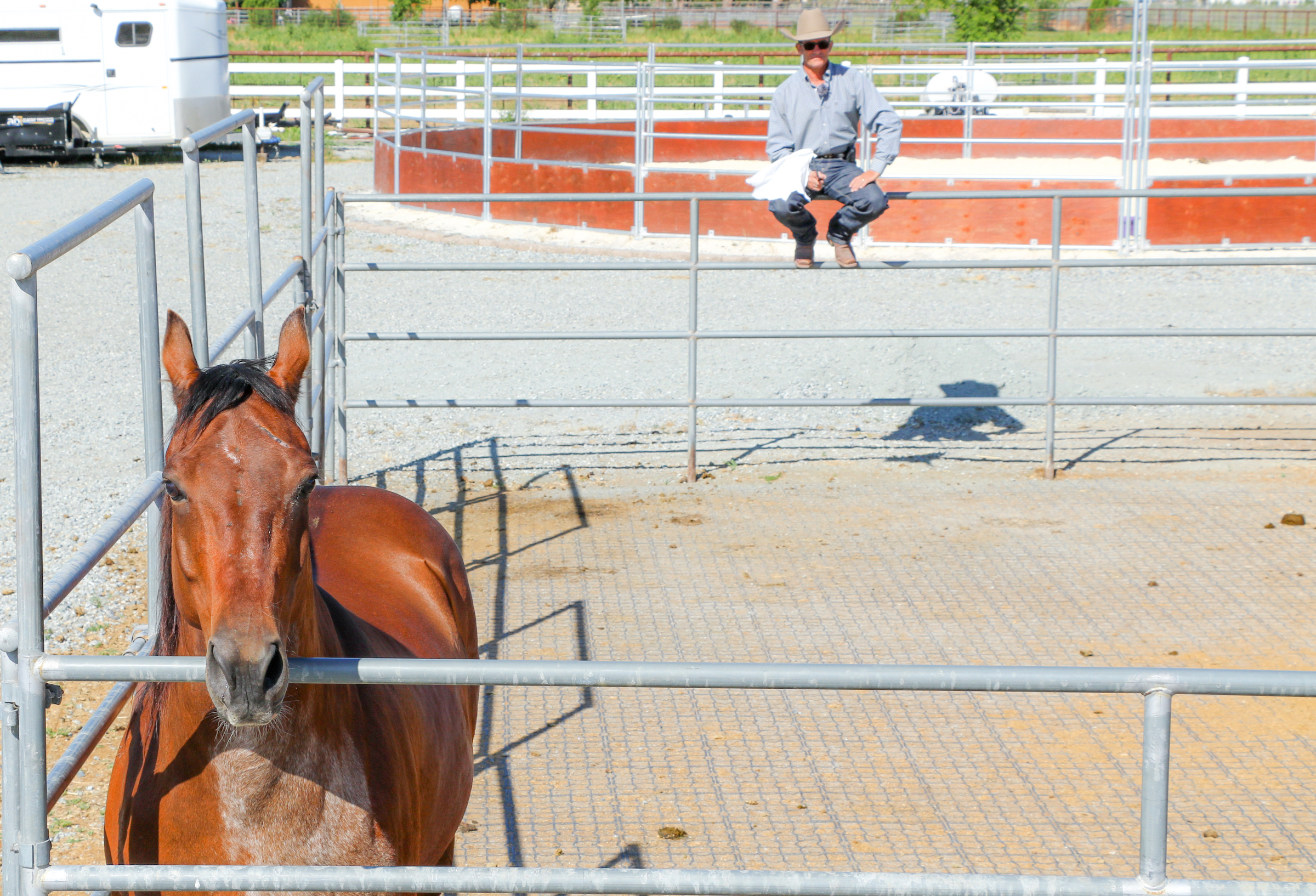
It worked. I’m waving the flag and he’s giving me his ears. I’ll now stop waving immediately to let him know I noticed his change in focus. It doesn’t seem like a lot, but when you repeat this over time, your horse comes to realize how tuned in to him you are, and this in turn gives him the confidence to stop feeling so distressed.
If simply waving the flag from where I sat hadn’t done the trick, I would’ve walked toward him and increased the flag’s activity until he directed his ears back to me.
After multiple repetitions of this, he might even walk over to me and stand for a moment. That’s great—but I wouldn’t try to catch him or keep him with me. I’d let him come and go as he pleased. I’d just keep catching his attention whenever he returned to obsessively focusing on his friends.
[WATCH as Warwick builds connection and trust with a horse.]
4. His Anxiety Fades
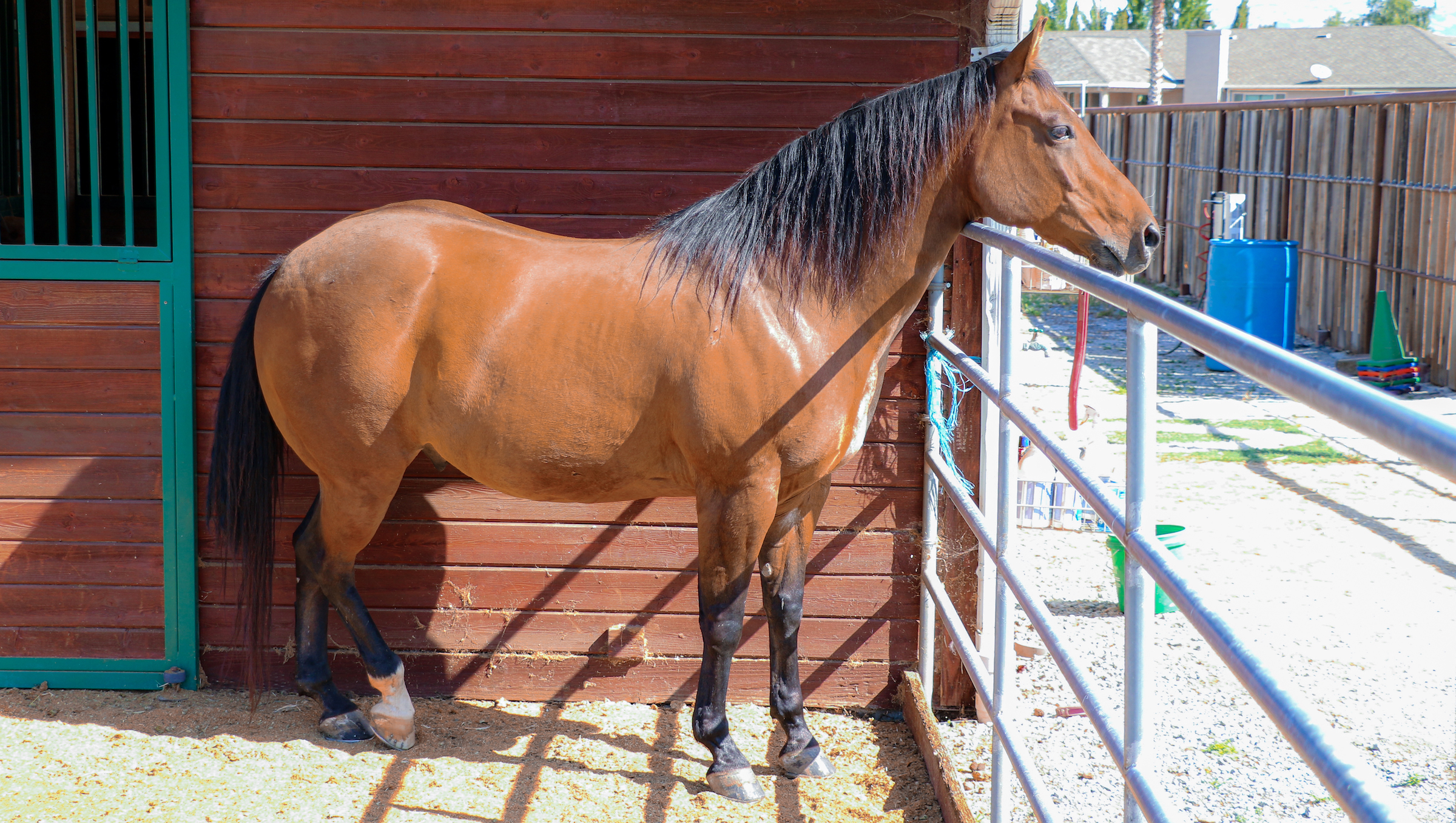
Here you see the result of several days’ worth of work exactly as I describe above. The gelding is standing relaxed, with a hind leg cocked. He’s looking out of his enclosure, but he’s not obsessive about it. He’s come to realize he can just “be a horse,” and everything will be OK. So there’s no need to feel anxious over the separation from his buddies.
He’s learned he can do this calming down on his own, so that even though he’s developing a connection to me, he doesn’t have to have me present to achieve relaxation.
And so the goal is achieved.
Watch Warwick!
Click here to view Warwick in action as he helps a horse suffering from separation anxiety.

